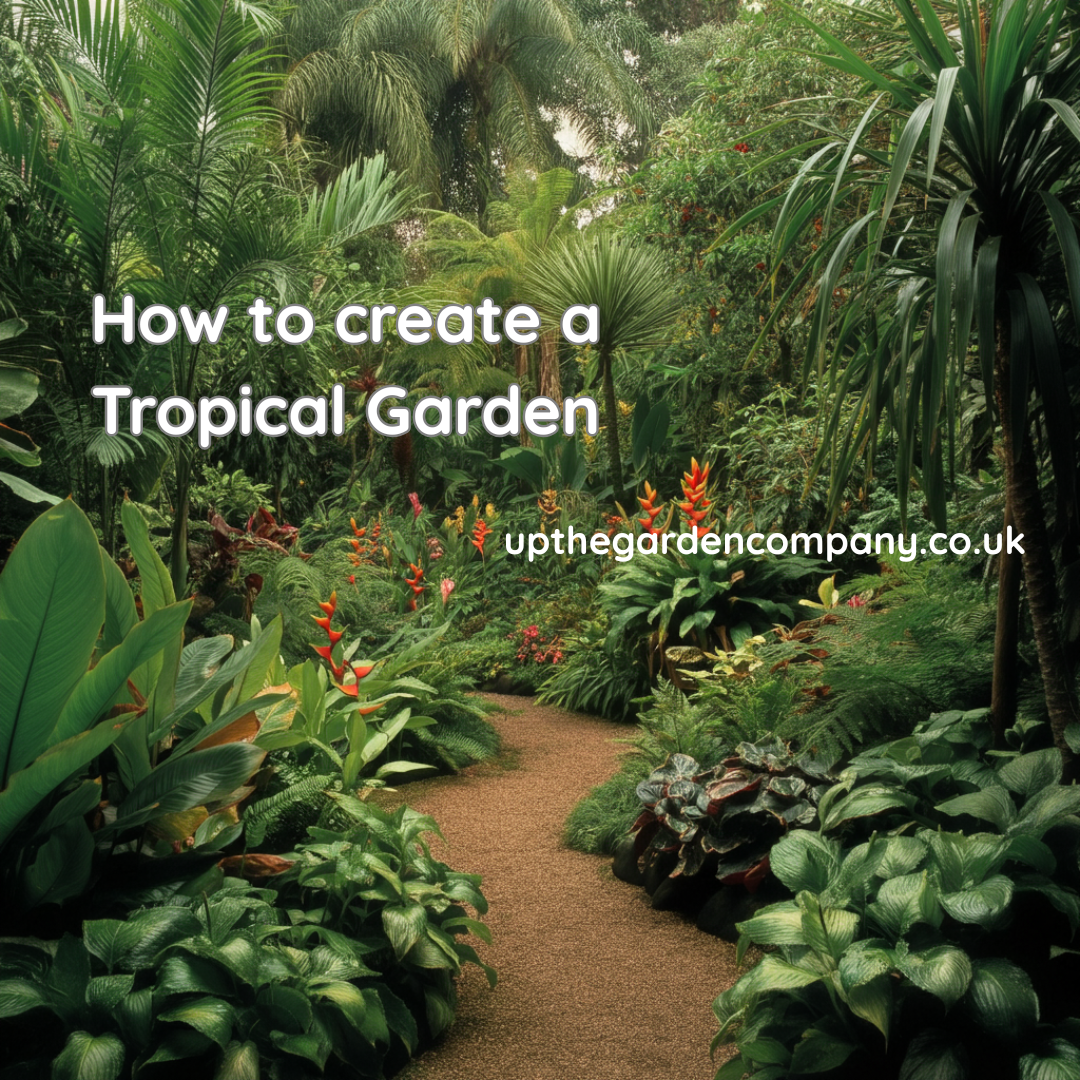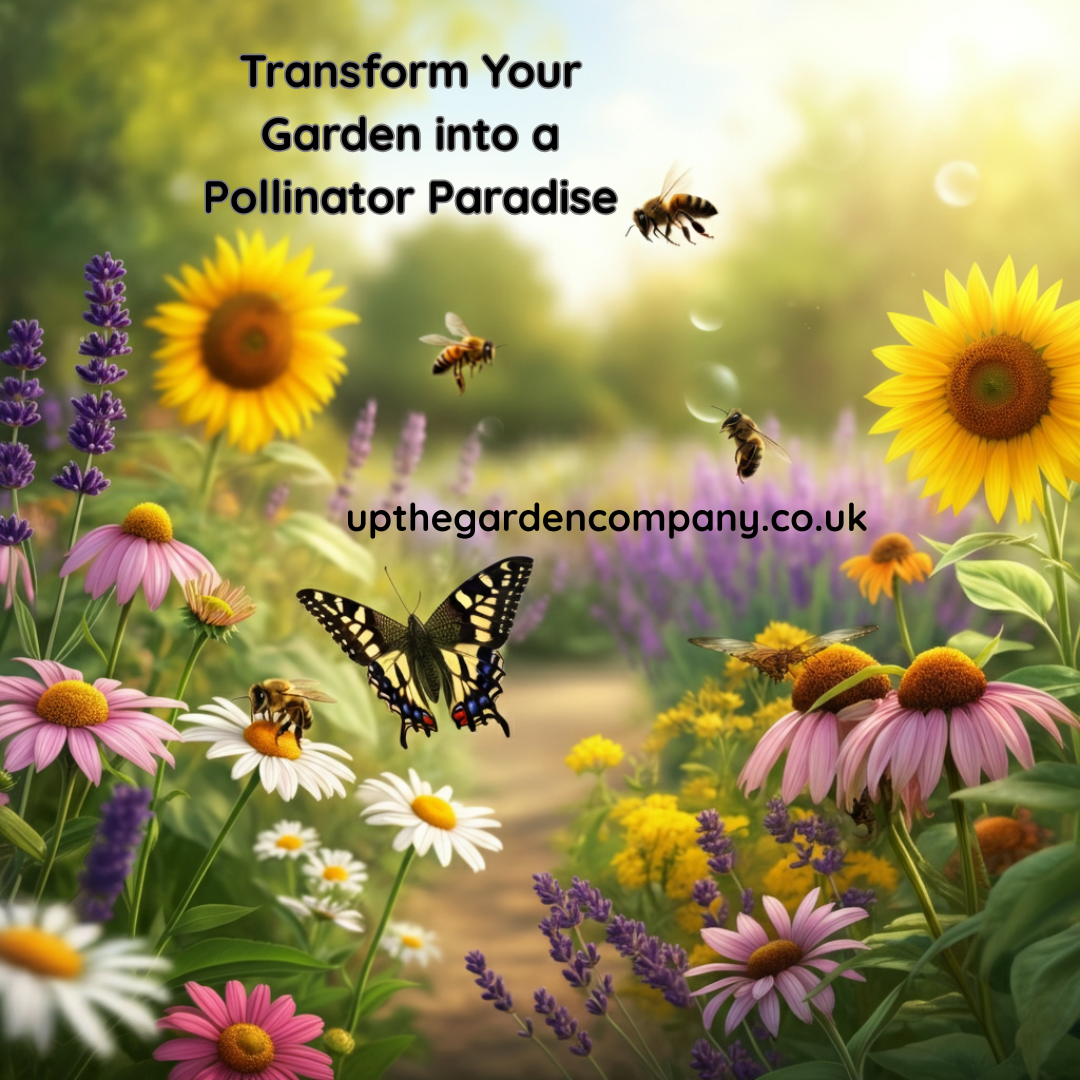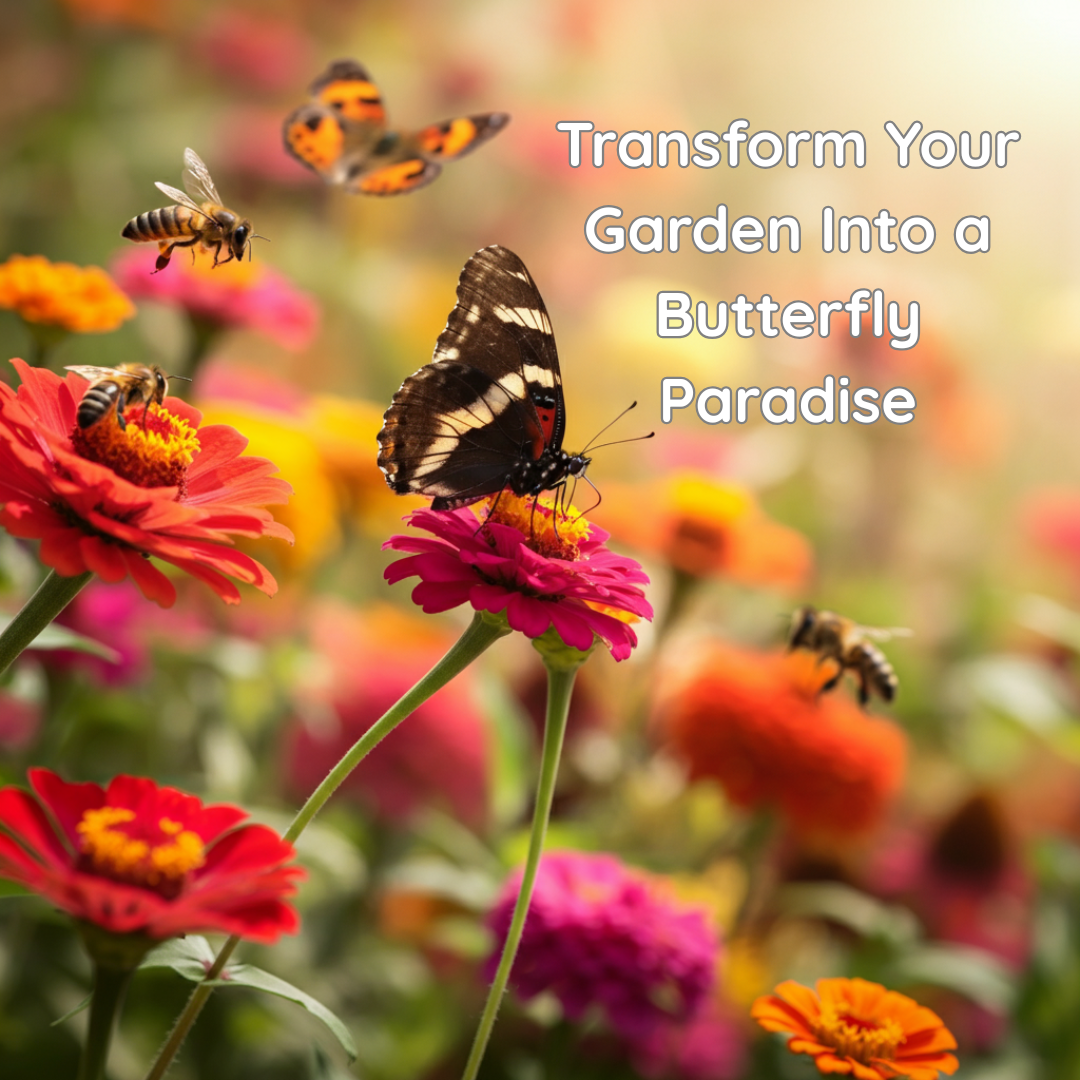Imagine stepping outside your back door and being greeted by lush, vibrant foliage that transports you to an exotic paradise. With the right planning and plant choices, you can create your own tropical garden sanctuary, even in the UK’s temperate climate. A tropical garden offers an exciting opportunity to experiment with bold textures, dramatic colours and architectural plants that make a real statement. The key lies in understanding the essential elements that define tropical style and adapting them to suit your local conditions and personal preferences.
What is a Tropical Garden?
A tropical garden recreates the lush, abundant feel of equatorial regions through careful plant selection and thoughtful design. These gardens are characterised by their rich green foliage, exotic flowers and dramatic architectural plants that create a sense of being transported to far-off destinations.
The essence of tropical gardening lies in creating layers of vegetation that mimic natural rainforest environments. This includes tall canopy plants, mid-level shrubs, and ground-covering species that work together to form a cohesive, jungle-like atmosphere. The goal isn’t necessarily to replicate an authentic tropical ecosystem, but rather to capture the mood and visual impact that makes tropical landscapes so captivating.
Tropical gardens emphasise bold textures and striking leaf shapes over delicate flowers. Large, glossy leaves, dramatic architectural forms, and plants with interesting bark or stem patterns all contribute to the tropical aesthetic. The overall effect should feel abundant, slightly wild, and utterly immersive.
Essential Elements of a Tropical Garden
Understanding the key components that define tropical style will help you create an authentic-looking garden that captures that coveted exotic atmosphere.
Lush Foliage and Layered Planting
The foundation of any tropical garden is its foliage. Think big, bold leaves in various shades of green, from deep emerald to bright lime. Plants with interesting leaf shapes—heart-shaped, paddle-like, or deeply lobed—add visual interest and create the layered look that’s so characteristic of tropical environments.
Create depth by combining plants of different heights and growth habits. Tall architectural specimens form the backbone, while medium-height shrubs fill the middle layer, and low-growing groundcover plants complete the picture. This layering technique ensures your garden looks full and established, even when young plants are still developing.
Architectural Statement Plants
Every tropical garden needs at least one show-stopping architectural plant that serves as a focal point. These specimens typically have dramatic form, unusual growth habits, or particularly striking foliage that commands attention. Position these plants where they can be appreciated from multiple viewpoints and ensure they have adequate space to develop their natural shape.
Warm Colour Palette
While green dominates tropical gardens, strategic use of warm colours enhances the exotic feel. Think sunset hues—oranges, reds, deep pinks and golden yellows. These colours can come from flowers, coloured foliage or decorative elements like containers and garden ornaments.
Water Features
The sound of moving water adds another sensory dimension to tropical gardens. Whether it’s a simple bubbling fountain, a small pond, or even just water-filled containers, incorporating water elements helps create that humid, lush atmosphere associated with tropical climates.
Design Considerations for Your Tropical Garden
Successfully creating a tropical garden requires careful attention to several key factors that will determine both the initial impact and long-term success of your design.
Site Assessment and Microclimates
Start by thoroughly evaluating your garden’s conditions. Note which areas receive full sun, partial shade or deep shade throughout the day. Identify any microclimates—sheltered spots that stay warmer, areas that remain moist longer, or exposed locations that experience more wind.
Understanding your site’s drainage patterns is equally important. Many tropical-style plants prefer well-draining soil, while others thrive in consistently moist conditions. Map out these different zones so you can match plants to their preferred growing conditions.
Environmental Factors
Consider your local climate’s limitations and opportunities. In the UK, most truly tropical plants won’t survive winter outdoors, but many subtropical and hardy exotic plants can create similar visual effects while tolerating cooler temperatures.
Wind exposure is particularly important for tropical gardens, as many large-leaved plants can suffer damage from strong winds. Plan to create windbreaks or position vulnerable plants in naturally sheltered locations.
Maintenance Requirements
Be realistic about how much time you can dedicate to garden maintenance. Some tropical-style plants require regular pruning, feeding or protection during winter months. Others are remarkably low-maintenance once established.
Consider whether you’re prepared to lift tender plants for winter storage or if you prefer to focus on hardy alternatives that can remain outdoors year-round. Your maintenance preferences should strongly influence your plant choices and overall garden design.
Design Flow and Layout
Plan pathways and viewing points that allow visitors to experience your tropical garden fully. Curved paths that wind through the planting create mystery and make gardens feel larger than they actually are. Position seating areas where people can pause and appreciate particularly beautiful plant combinations or garden vistas.
Think about seasonal interest and how your garden will look throughout the year. While tropical gardens are often associated with summer abundance, incorporating evergreen plants and interesting bark or stem textures ensures year-round appeal.
Perfect Plants for UK Tropical Gardens
These carefully selected plants will help you achieve tropical style while thriving in British growing conditions.
1. Tree Fern (Dicksonia antarctica)
This magnificent fern creates instant tropical atmosphere with its enormous, lacy fronds emerging from a distinctive fibrous trunk. Hardy to approximately -5°C, tree ferns thrive in partial shade with consistent moisture. They make excellent architectural centrepieces and provide beautiful textural contrast.
2. Chusan Palm (Trachycarpus fortunei)
One of the hardiest palms available, the Chusan palm tolerates temperatures down to -15°C once established. Its fan-shaped leaves and distinctive hairy trunk immediately signal tropical style. Plant in a sheltered location with good drainage for best results.
3. Banana Plant (Musa basjoo)
Hardy banana plants produce enormous paddle-shaped leaves that epitomise tropical luxury. While the top growth dies back in winter, the plant returns vigorously each spring. Provide shelter from strong winds to prevent leaf damage.
4. Fatsia japonica
This glossy-leaved evergreen shrub produces dramatic hand-shaped leaves and tolerates a wide range of growing conditions. Extremely hardy and reliable, Fatsia provides year-round structure and works well in both sun and shade.
5. Gunnera manicata
For gardens with space and consistent moisture, Gunnera produces some of the largest leaves you’ll ever see—often reaching 2 metres across. This dramatic perennial creates incredible impact but requires protection during winter months.
6. Cordyline (Cordyline australis)
These architectural plants develop distinctive spiky crowns of sword-like leaves atop sturdy trunks. Available in green and burgundy forms, Cordylines tolerate coastal conditions and add vertical interest to tropical plantings.
7. Hardy Hibiscus (Hibiscus syriacus)
Producing large, colourful flowers in late summer, hardy hibiscus brings authentic tropical blooms to UK gardens. These deciduous shrubs are completely hardy and available in white, pink, blue and purple varieties.
8. Bamboo (Phyllostachys species)
Clumping bamboos provide instant height and create gentle rustling sounds that enhance the tropical atmosphere. Choose clumping rather than running varieties to avoid invasive spreading.
9. Canna Lily
These bold perennials produce broad leaves and exotic flowers in brilliant colours. While not hardy in most UK locations, Cannas can be lifted and stored indoors during winter or grown as annuals.
10. Acer palmatum (Japanese Maple)
Certain varieties of Japanese maple, particularly those with large or unusually shaped leaves, contribute tropical feeling while being completely hardy. Their autumn colour provides additional seasonal interest.
Tropical Garden Features to Consider
Beyond plants, several design elements can enhance your garden’s tropical atmosphere and create authentic exotic ambience.
Water Elements
Installing a water feature transforms your garden’s atmosphere instantly. Consider a tiered fountain for the soothing sound of cascading water or create a small pool surrounded by lush plantings. Even large decorative bowls filled with water and floating plants can add tropical sophistication.
Seating Areas
Create inviting spaces where you can relax and enjoy your tropical paradise. Comfortable seating positioned to take advantage of the best views encourages regular use and appreciation of your garden. Consider materials like teak or rattan that complement the tropical aesthetic.
Lighting Design
Strategic lighting extends your garden’s usability into evening hours and creates magical atmospheres after dark. Uplighting architectural plants creates dramatic silhouettes, while string lights or lanterns add festive tropical resort ambience.
Decorative Containers
Large containers allow you to grow tender plants that can be moved to protection during winter. Choose pots in natural materials like terracotta or glazed ceramics in warm earth tones that complement your planting scheme.
Pergolas and Structures
Overhead structures create defined spaces and provide support for climbing plants. A pergola draped with vigorous climbers mimics the canopy effect found in natural tropical environments.
Caring for Your Tropical Garden
Proper maintenance ensures your tropical garden remains healthy and beautiful throughout the growing season and beyond.
Seasonal Care Schedule
Spring marks the beginning of active growth for most tropical-style plants. Remove any winter protection, begin regular feeding programmes, and carry out necessary pruning. This is also the ideal time for planting new additions and dividing established perennials.
Summer requires consistent watering and regular feeding to support the rapid growth that characterises tropical plants. Monitor for pest and disease issues, which can develop quickly in warm, humid conditions.
Autumn preparation involves reducing feeding, collecting seeds from plants you want to propagate, and beginning winter protection for tender specimens. This is also an excellent time for planting hardy additions that will establish before winter.
Winter care focuses on protecting tender plants and maintaining garden structure. Mulch around plant bases, wrap vulnerable specimens, and ensure good drainage to prevent winter waterlogging.
Watering and Feeding
Most tropical-style plants prefer consistent moisture but not waterlogged conditions. Water deeply but less frequently to encourage strong root development. Mulching around plants helps retain moisture and suppress weeds.
Feed regularly during the growing season with balanced fertilisers. Plants in containers require more frequent feeding than those planted directly in the ground.
Pruning and Maintenance
Remove dead, damaged, or diseased material promptly to maintain plant health and appearance. Many tropical plants benefit from regular pruning to encourage bushy growth and prevent them from becoming too large for their allocated space.
Key Considerations Before Starting
Several important factors deserve careful consideration before beginning your tropical garden project.
Climate Limitations
Understand your local climate’s constraints and work within them rather than against them. Research average temperatures, frost dates, and typical weather patterns to make informed plant choices.
Budget Planning
Tropical gardens can be created on various budgets, but initial costs can be significant if you’re purchasing large architectural plants. Consider starting with smaller specimens that will grow into feature plants over time.
Long-term Commitment
Tropical gardens often require more maintenance than traditional British gardens, particularly during establishment phases. Ensure you’re prepared for the ongoing care requirements your chosen plants will need.
Space Requirements
Many tropical plants grow larger than typical garden plants and need adequate space to develop properly. Plan for mature sizes rather than current plant dimensions to avoid overcrowding issues later.
Advantages of Tropical Gardens
Creating a tropical garden offers numerous benefits that extend beyond simple aesthetic appeal.
The dramatic visual impact of tropical plantings creates stunning focal points and conversation pieces. These gardens provide opportunities to grow unusual and exotic plants that showcase your horticultural interests and skills.
Tropical gardens often attract diverse wildlife, including beneficial insects and birds drawn to the abundant shelter and food sources. The lush plantings create natural privacy screens and help establish distinct outdoor rooms within larger garden spaces.
Many people find tropical gardens particularly relaxing and therapeutic. The abundant green foliage and exotic atmosphere provide perfect spaces for unwinding and escaping everyday stresses.
Potential Disadvantages to Consider
Tropical gardens also present certain challenges that prospective creators should understand.
Higher maintenance requirements compared to traditional gardens can demand significant time investments. Many plants require winter protection or seasonal lifting and storage, adding to annual garden tasks.
Initial establishment costs can be substantial, particularly if you want immediate impact from larger specimen plants. Some tropical plants have specific soil or environmental requirements that may necessitate garden modifications.
In small spaces, vigorous tropical plants can quickly outgrow their allocated areas, requiring frequent pruning or replacement. Weather damage during storms can be more severe due to large leaves and architectural growth habits.
Transform Your Garden Into a Tropical Haven
Creating your own tropical garden paradise is an achievable goal that brings exotic beauty and year-round interest to any outdoor space. Start with careful planning and realistic plant choices suited to your local climate and maintenance preferences.
Focus on building strong garden bones with architectural plants and layered planting schemes that create authentic tropical atmosphere. Incorporate complementary features like water elements and appropriate lighting to enhance the overall effect.
Remember that successful tropical gardens develop over time. Begin with a solid foundation of hardy plants and gradually add more adventurous specimens as your confidence and experience grow. With patience and proper care, your tropical garden will become a stunning outdoor sanctuary that transports you to exotic destinations without leaving home.
Take the first step towards your tropical garden dream by assessing your current outdoor space and identifying the best locations for key plants. Start planning your plant list today and prepare to create your own slice of paradise.
Further Reading: Creating a Cottage Garden, Creating a Perfect Coastal Garden,



